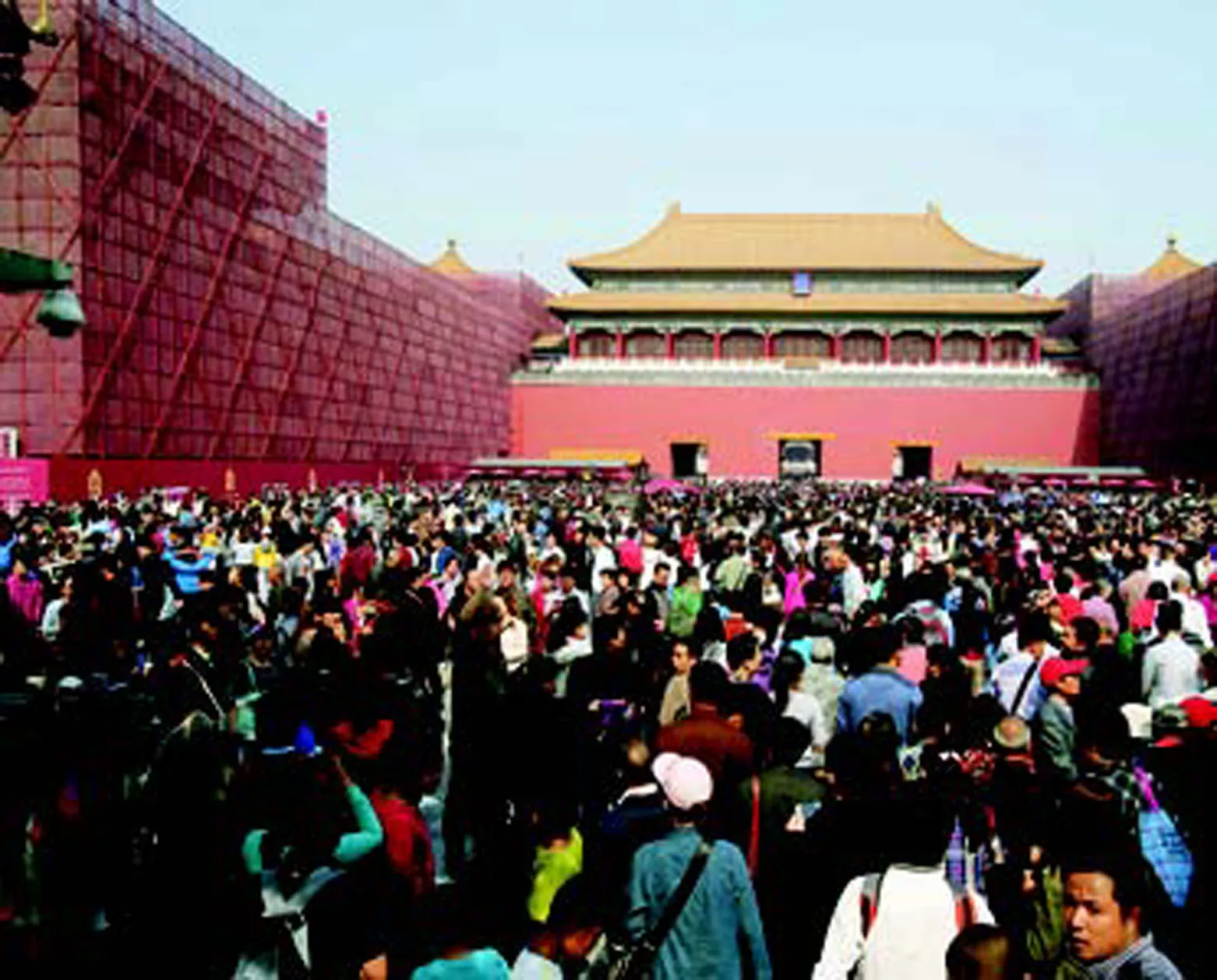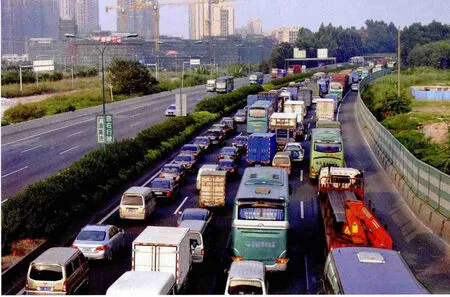Cause for Confusion
2013-12-07ByYuanYuan
By Yuan Yuan
Chaotic holiday arrangements prompt outcries for greater flexibility
Before this year’s Mid-Autumn Festival(September 19) and National Day holiday(October 1-7) had even started, the off i cial holiday calendar has become a subject of complaint for one reason that made it stand out: The schedule was unusually complicated.
According to the holiday calendar that was announced by the General Office of the State Council, China’s cabinet, at the end of 2012, the irregular schedule would start on September 16, when workplaces would open for three days and then close for three to celebrate the Mid-Autumn Festival. After this, people would return to work for six days straight followed by one day off. Then they return for another two days’ work, followed by the seven-day National Day holiday. Finally they return to work for another five days,take one day off and then finally resume their normal work routine on October 13.
“This is almost the most confusing holiday calendar in history,” one user commented on Sina Weibo, China’s twitter-like microblogging service. “We have to check every morning whether we should be at work or not.”
However, this is not the first time people have been confused by their work schedules during and around holidays.
The reasoning
In 2008, China decided to add two more traditional holidays to the national holiday schedule—the Dragon Boat Festival and the Mid-Autumn Festival. These traditional festivals follow the Chinese lunar calendar and as such they don’t have a fixed date on the modern day Gregorian calendar.
Of ficially, China only allows one day for the Mid-Autumn Festival, often in late September or early October, and three days for the National Day holiday. However, in order to give people the chance to have more time to enjoy themselves, the government extends the holidays out to three days and seven days, respectively.As a result, people are required to work on weekends to make up for the extended absence from work. On some occasions, people may have to work for seven to nine days straight before or after the time off.
For example, the Mid-Autumn Festival fell on September 19 this year, which is a Thursday, so Thursday, Friday and Saturday were allocated as days off, with a return to work on Sunday. In 2012, the Mid-Autumn Festival fell one day before the National Day(October 1), allowing for the opportunity to enjoy an extended eight-day vacation at the expense of working nine days in a row before.
Before 2008, China had three weeklong vacations for May Day, National Day and Spring Festival, or Chinese Lunar New Year. This vacation arrangement started in 1999 with the aim of boosting consumer spending when Asia was suffering an economic setback.
The purpose of adding the extra traditional festivals to the holiday schedule in 2008 was honoring Chinese tradition, but it seems that the holidays have become little more than an opportunity for travel and consumption.
Cai Jiming, a professor at Tsinghua University, said, “Since the holidays haveto occur on certain days according to the lunar calendar, weekends are reshuffled to be part of the holidays, and this disrupts workplace routines.”

HOLIDAY HEAT: Crowds at the Palace Museum in Beijing, China’s imperial palace of the Ming and Qing dynasties (1368-1911), on October 3
Months in advance of the holidays,discussion online gravitates toward how to make the most of the convoluted schedule coming up. This year, some suggested that if a person asked for leave for the two days of work after the six days off, then he or she could get 10 days in a row when the National Day holiday arrived—but only if his or her boss approved.
Long holidays
A survey made by China Youth Daily in February showed that 73.4 percent of the respondents are not satis fied with the holiday arrangement,complaining that it was “not balanced” and“not flexible.” Among the 2,068 surveyed, 60.5 percent said that the “reshuf fling” makes them feel more, rather than less, exhausted.
“Normally people need one or two days after the holidays to get back into a working mood. The fragmented holiday arrangements affect efficiency during the working days in-between,” said Jiao Zhenguo, General Manager of the Zhiguan Enterprise Management Consulting Co. Ltd. in the southwestern metrocity of Chongqing.
Jiao suggested that it would be more effective to allow companies to make their own, moreflexible, schedules.
“If companies are allowed to make their own holiday arrangements, I worry that my boss wouldn’t be generous enough to give us a seven-day vacation,”said Han Yujing, an employee at a private company in Beijing.Han revealed that he works overtime during the weekdays and the “legal holidays” are the only time he can have a break.“Long or short, it is better than nothing,” Han said.
In February, the State Council announced plans to build a paid annual leave system, planning to have it implemented by 2020. Both the program and the Tourism Law,which took effect on October 1, emphasize the importance of tourism and leisure welfare for citizens.

CONGESTION: Traf fic jam on the expressway out of Guangzhou City in Guangdong Province on October 7
“Currently, those working for government organizations and state-owned enterprises are more likely to take paid vacations. Those of us working for labor-intensive and private firms rarely have the chance,” Han said, adding that the Labor Law stipulates only five days of annual paid leave for employees working less than five years at a place of employment.
“Even if the employers allow us to take vacations, we are at risk of losing promotion opportunities due to fierce competition,” Han said.
“Creating a holiday system that can satisfy everyone is unlikely,” said Wang Chenguang, a professor of tourism management at Shandong University.
Wang believes the problem is more about the quality of the holidays than the quantity.“People don’t have many choices when traveling, which causes overcrowding and traffic jams at scenic spots.”
Figures from the China National Tourism Administration show that during October 1-7,Chinese tourists made 428 million domestic trips, an increase of 15.1 percent year on year.
The 125 major scenic areas covered by the national tourism forecast system received 31.25 million visitors during the holiday.
The huge number of travelers has put a heavy burden on the country’s road and rail traffic, scenic spots, and dining and lodging facilities.
In one extreme case, the Jiuzhai valley in southwest China’s Sichuan Province, a World Heritage site, failed to cope with a sudden rush of 40,000 tourists, leaving more than 4,000 of them stranded in the valley on October 2,without shuttles or other transportation until 10 p.m. Traf fic in the area was blocked after some visitors lost patience and tried to stop buses so that they could board them.
Qu Youqin from east China’s Shandong Province, who came to Beijing with her husband during the holiday, said she was shocked by how many people were at the Tiananmen Square.
“We got up as early as 5 a.m., changed trains twice in the subway, and walked several km to the square, only to find that there were too many tourists there,” she said. “The police required us not to stay long because there were many other tourists behind us.”
“Although I hate traveling to crowded places, I had no choice. The National Day holiday is the only long holiday that I could enjoy with my husband and our son,” Qu said. “But now I feel more fatigued after the vacation than before.”
“People need long holidays to make longdistance travel plans. After the government canceled the seven-day May Day holiday in 2008, a lot of people’s travel plans have been squeezed into the National Day holiday, causing worse congestion and more crowds,” said Zhang Ming, General Director of the Shandong Jiahua Tourism Co. Ltd.
“The holiday has now become a government-led economic campaign instead of a chance for workers to relax,” said Zhao Zongfu, President of the Qinghai Provincial Academy of Social Sciences. “The weeklong holiday is aimed at boosting consumption and helping to ease work pressure, but only the first has really been achieved.” ■
